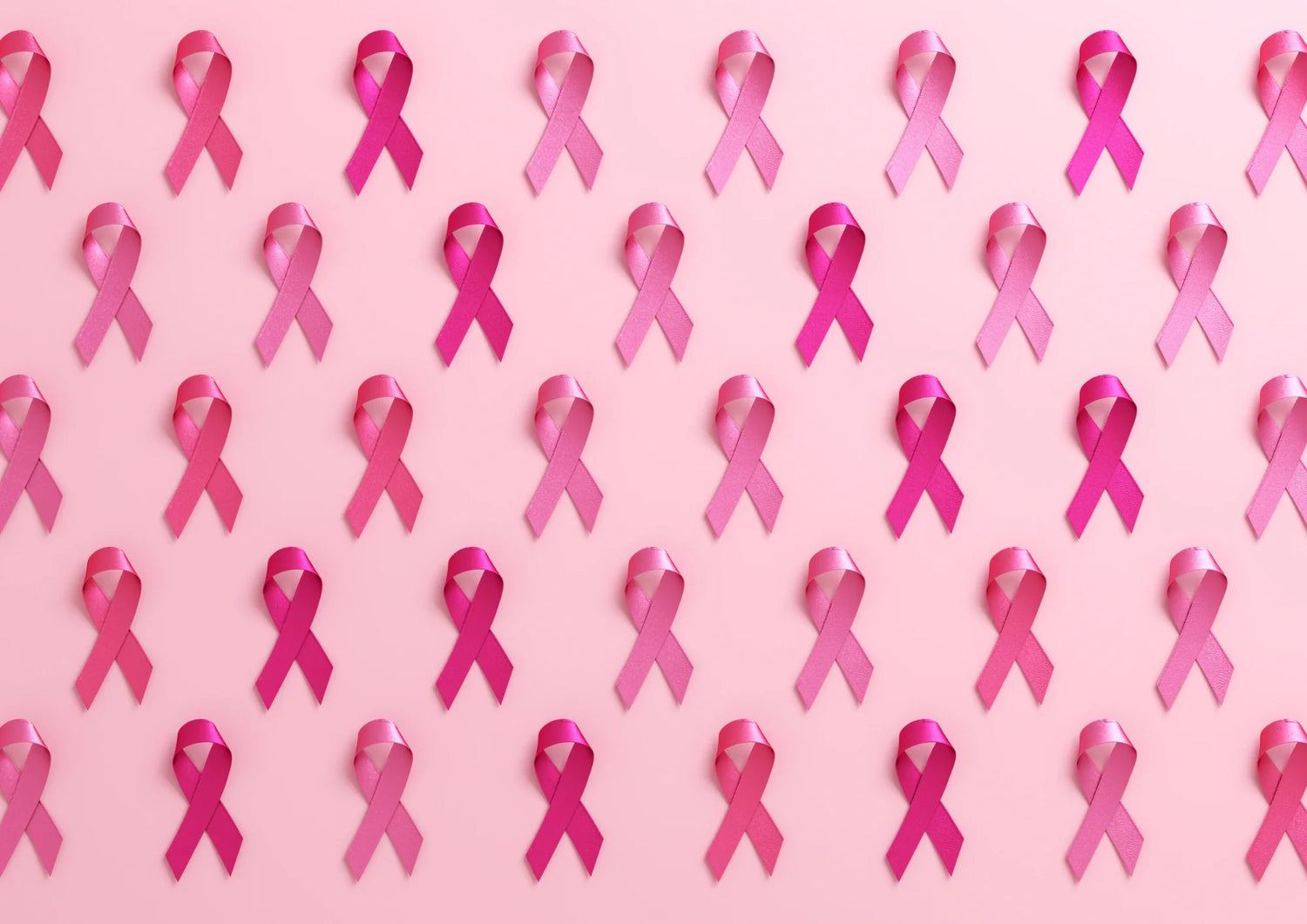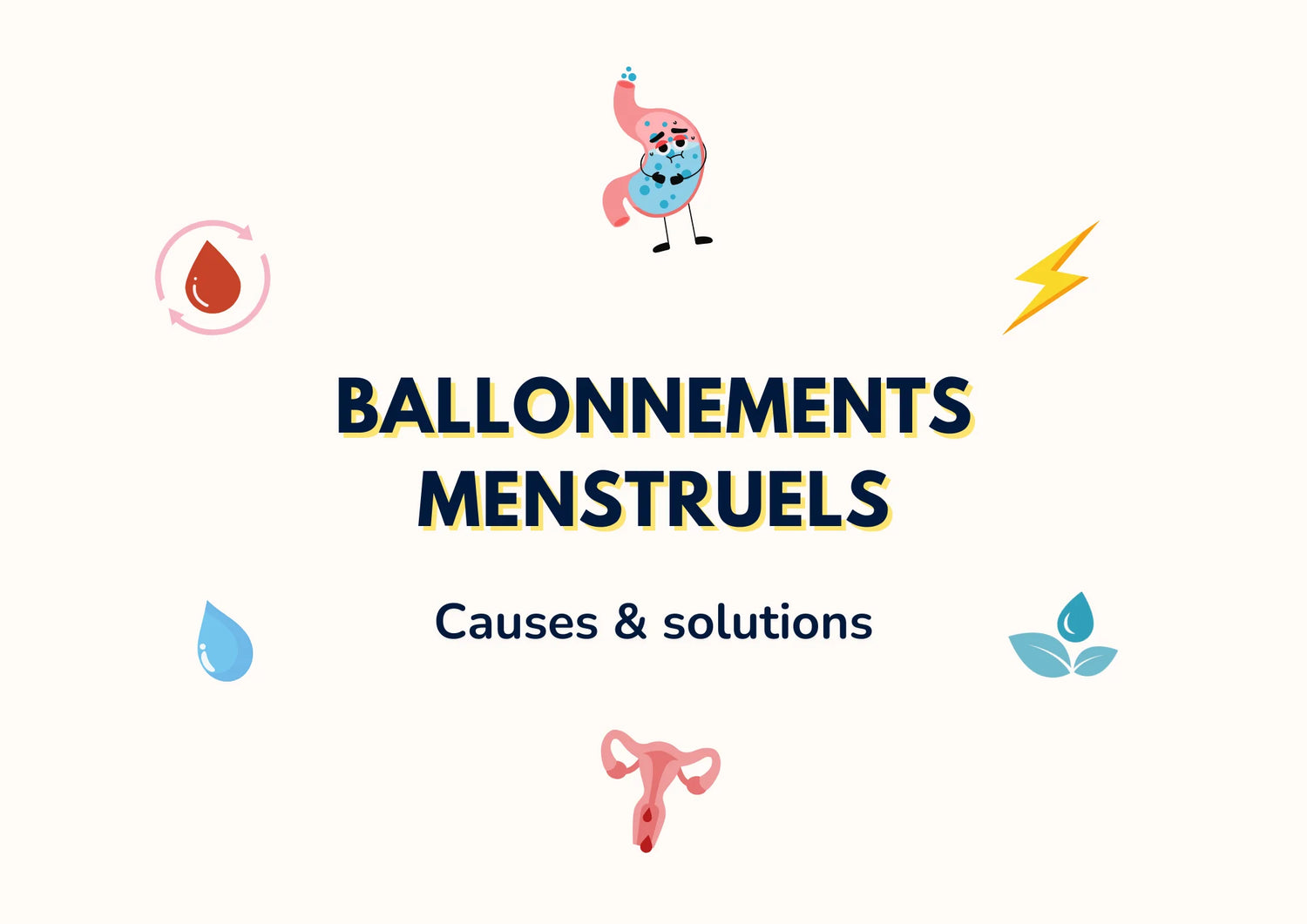Have you ever heard of toxic shock syndrome (TSS) ? 🤔
It is an infection that can be linked to the use of tampons or menstrual cups. Many women confuse its early signs with the flu or a stomach bug.
Result: diagnosis is delayed. But rest assured: TSS is very rare and there are simple ways to reduce the risk!
In this article, we will explore together what toxic shock is, its causes, symptoms, but especially how to protect yourself daily. 🌸

What is toxic shock syndrome (TSS)?
Your friends and family may have mentioned toxic shock, but you’re not quite sure what it means? We’ll explain! ⬇️
Behind this somewhat alarming name is a rare but serious infection that deserves attention, especially when using internal menstrual products like tampons or cups.
Toxic shock syndrome is an acute infection caused by a bacterium called Staphylococcus aureus (or golden staph). This bacterium can produce a specific toxin, TSST-1 (Toxic Shock Syndrome Toxin-1). Under certain conditions, this
toxin enters the bloodstream and acts like a true poison. It can trigger a violent reaction in the body, leading to shock and damage to several vital organs (liver, kidneys, lungs, heart).However, staphylococcus is not inherently a “bad” bacterium.
It is naturally found in many people, harmless, on the skin, in the nostrils, under the armpits and even in the vagina. As long as your immune system produces enough antibodies to neutralize the toxin, there is no risk. 🤗 But if your defenses are weakened or if the bacterium finds a
favorable environment to multiply (such as stagnant blood in a tampon or menstrual cup), the risk of contracting it increases. ⛔️And good news:
TSS is not contagious 💕. You cannot transmit it to a friend, partner, or those around you!
However, having had
toxic shock before does not guarantee permanent immunity. It is therefore possible to develop it again if conditions are met.So then
: what can actually trigger this infection ? Let’s look at the main causes of TSS. 🤗What are the causes of toxic shock syndrome?
Toxic shock syndrome
does not appear by chance. Several factors can explain it, and the first to understand is the role played by certain bacteria already present in our body. 😊The role of bacteria 🦠We all carry bacteria
in our bodies and most of the time they are
harmless. As we saw earlier, golden staph naturally lives on the skin or in the vagina without danger.The problem arises when it produces a toxin (TSST-1) that enters the blood. If your immune defenses are not enough to block it, this toxin can then reach several vital organs.Good news: not all
women carrying staphylococcus develop TSS.
The risk depends on the bacterial strain, your immune defenses, and the context (such as blood stagnation in a tampon). 🤗Internal menstrual products 🩸Yes,
tampons
and menstrual cups are convenient, but they can sometimes promote toxic shock. Why? Because when blood stagnates too long in the vagina
, it becomes an ideal environment for staphylococcus to multiply. This allows it to produce the famous TSST-1 toxin. The risk especially increases if you keep a tampon for more than 6 hours
or all night. Under these conditions, the bacterium can produce the toxin responsible for TSS, which then passes into the blood.No worries: this remains rare, and you can greatly reduce this risk by changing your products regularly. 💕Other possible causes ⚠️
Toxic shock syndrome

does not only occur during menstruation. It can also appear in other situations:
after an infected surgical wound or burn,following childbirth or a uterine infection,during a medical procedure with internal dressings (for example in the nose),
- or even with certain mechanical contraceptives (vaginal sponges, diaphragms).
- This means that
- TSS can affect women, men, and children alike
- , although cases related to menstruation remain the most well-known. 🩸
In summary, TSS can be favored by
internal menstrual products, but also by other infections or medical interventions. Whatever the origin, it is always bacterial toxins that trigger the reaction.You’re probably wondering now 🤔: how to recognize the warning signs of toxic shock syndrome? Let’s look at the symptoms that should alert you.
What are the symptoms of toxic shock syndrome?Toxic shock syndrome develops very quickly. The
symptoms often appear suddenly
. That’s why it’s essential to know how to spot the early warning signs. 🤗Early warning signsSymptoms appear without warning and can resemble other fairly common illnesses. Here are the signals that should alert you:Sudden fever (39°C or higher) 🌡️
Vomiting, diarrhea, malaise 🤢
Headaches 🤯
Sunburn-like rash ☀️
- If you
- are wearing a tampon or cup, remove it immediately
- and
- seek

emergency care!Disease progressionIf the infection is not treated, your blood pressure can drop and your vital organs can be affected (liver, kidneys, lungs). In extreme cases, coma or death can occur.
But don’t panic:
staphylococcal toxic shock is less severe if treated quickly
! 🤗As you understand, toxic shock syndrome can progress very fast and have serious consequences if not treated promptly
. The good news is that rapid diagnosis and appropriate treatments allow this infection to be cured as quickly as possible. So, let’s look at the medical solutions offered. 🩺Treatment of toxic shockIf suspected, hospitalization is immediate.
The priority is to
stabilize the patient
with IV fluids to raise blood pressure and, if needed, respiratory support. The tampon, cup, or
any vaginal device is removed immediately. Intravenous
antibiotics are administered, sometimes combined with immunoglobulins
to neutralize the toxin.If a wound is infected, minor surgery may be necessary
to clean the area. Good news: with prompt treatment, most women fully recover 🙏.As you’ve seen, toxic shock requires
rapid care
, but treatments are effective and allow recovery in the vast majority of cases. The key is prevention: here are simple steps to protect your health every day. 🌸Prevention: how to reduce the risk of toxic shock syndrome?The good news is that there are
simple steps to limit the risk of toxic shock syndrome. And it starts with your habits when using menstrual products! 🩸
Best practices with menstrual products
You can continue to use tampons and cups, provided you follow a few simple rules:Change every 4 to 6 hours, Avoid super-absorbent tampons,
Prefer pads or menstrual underwear at night,
Thoroughly disinfect the menstrual cup before each use.
- Other important precautions
- If you have had TSS before: avoid tampons,
- Monitor your wounds and skin infections,
- Seek medical attention quickly if you notice TSS symptoms.
In summary,
- TSS can be largely prevented by a few simple habits.
- Regularly changing your products, prioritizing safety at night, and staying attentive to your body’s signals are already enough to greatly reduce the risk. 💕
- As we have seen,
toxic shock syndrome (TSS) is a rare but serious infection linked to bacteria like golden staph
. It can occur when using internal menstrual products, but also after certain wounds or medical procedures. The best defense remains prevention: regularly changing your products, avoiding super-absorbent tampons, preferring pads or menstrual underwear at night, and staying attentive to your body’s reactions.Rest assured: you are not the only one with questions! By adopting these simple steps, you already significantly reduce the risk. Your intimate health is precious, take care of it. 🌸. It can occur when using internal menstrual protection, but also after certain wounds or medical procedures. The best weapon remains prevention: change your protection regularly, avoid super-absorbent tampons, prefer pads or menstrual underwear at night, and stay attentive to your body's reactions.
Rest assured: you are not the only one with questions! By adopting these simple habits, you are already significantly reducing the risk. Your intimate health is precious, take care of it. 🌸


 https://mysorio.com
https://mysorio.com


